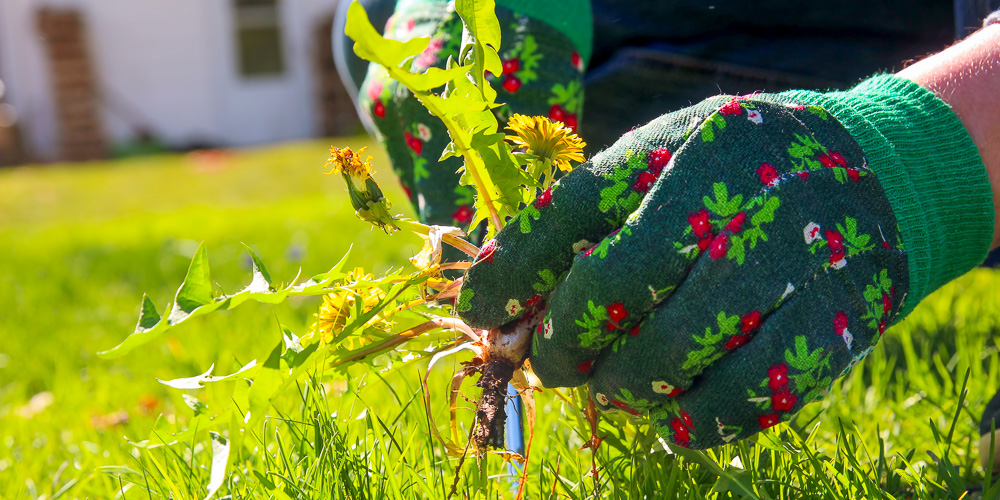You carefully loosen and rake the soil, tamp down the new grass seed, and water religiously just as the directions say. But a few weeks later, it seems that as many weeds have popped up in your newly seeded patch as blades of grass.
What went wrong?
Many assume the explanation is that weed seeds were in the grass-seed bag along with the grass seed itself. While a small number of weed seeds can creep into any bag of grass seed, post-seeding weed outbreaks are primarily the result of weed seeds that already were present in the soil.
Why the outbreak?
Weed seeds are a natural inhabitant of most soil. Ones closest to the surface sprout to become each season’s new weeds, while others work their way deeper, where they can lie dormant for decades.
When actions such as digging, tilling, and dethatching work these dormant weed seeds closer to the surface, the improved light and warmth there encourage them to sprout. The regular watering you do to encourage grass seed to germinate is the final ingredient that sprouts weed seeds with a vengeance, too.
In a way, having weeds sprout confirms that you did the right things to maximize the establishment of new grass, especially in watering sufficiently and in loosening the soil so those young grassroots penetrate quickly.
Reduce the chance of weeds sprouting with GreenView Pure Grass Seeds that contain no coatings, no fillers, and extremely low levels of stray weed seed.
What about the weeds?

Saklakova / iStock / via Getty Images
If you’re seeing only a few weeds here and there, they can be pulled or dug. They should come out easily since they’re newly sprouted. Remember to tamp any disturbed grass plants back into the soil.
For more widespread weed outbreaks, almost all of the broadleaf culprits, such as chickweed, creeping speedwell, and dandelions, can be killed later with a broadleaf weed killer formulated for use in lawns.
These selective herbicides kill most leafy plants without harming grass plants. The key, though, is waiting until the new grass plants have grown enough to withstand the weed killer’s active ingredients.
Most such herbicides advise waiting at least four to six weeks before applying them to new grass. Read the label for exact timing and application instructions, and never apply these herbicides sooner so you don’t kill young grass along with the targeted weeds.
Broadleaf herbicides come in liquid or granular forms. Liquids are good for spot-spraying patches of weeds, while granular herbicides can be applied with a lawn spreader to cover large areas with weeds throughout.
Many grassy weeds that pop up are annual ones, meaning they die naturally at the end of the growing season and sprout again the following year. Crabgrass is the best known of these, but others include foxtail, barnyard grass, and goosegrass. These unwanted grasses can be pulled or they can be left alone the first season, then prevented by annual spring applications of a granular weed-preventer.
GreenView Fairway Formula Spring Fertilizer with Crabgrass Preventer both fertilizes and prevents new grassy weeds, while GreenView Fairway Formula Spring Fertilizer Weed and Feed and Crabgrass Preventer is a three-function product that fertilizes, prevents new grassy weeds, and kills most broadleaf weeds that haven’t already been eliminated.
The toughest new weeds to control are perennial grassy weeds, which come back from their own roots year after year once they sprout and root. Examples are nimblewill, quackgrass, and orchard grass. Selective broad-leaf weed killers generally don’t control these because they’re too similar botanically to turfgrasses.
The solution is to pull them as soon as you see them. Otherwise, spot spray them later with a non-selective herbicide, then reseed the bare area.